
On this day in Tudor history, the first English Protestant martyr, John Rogers, was burned in the reign of Queen Mary I. Let me tell you more about him and his fate.
[Read More...]
On this day in Tudor history, the first English Protestant martyr, John Rogers, was burned in the reign of Queen Mary I. Let me tell you more about him and his fate.
[Read More...]
In today’s video, I read an excerpt from my book “On This Day in Tudor History” about an event which happened on 3rd February 1587 and which was connected to Mary, Queen of Scots.
[Read More...]
Student and avid history fan, Emma Casson, is 18 years old and lives in the Netherlands. She contacted us as she wanted to share her experiences of learning about the Tudors and what she feels could be done to help history to flourish in the education system. Over to Emma…
[Read More...]
On this day in history, 7th January 1619, Nicholas Hilliard, the famous Elizabethan goldsmith and miniaturist, was buried at the parish church of St Martin-in-the-Fields, London. This means that it’s the 400th anniversary of his burial!
Hilliard is known for his beautiful portrait miniatures of the English court in the reigns of Elizabeth I and James I, and his paintings of Elizabeth I: the “Pelican” portrait and the “Phoenix” portrait.
Hilliard is a fascinating man and artist, and he is the subject of Dr Elizabeth Goldring’s new book, which is due to be released by Yale University Press on 12th February. Its title is Nicholas Hilliard: Life of an Artist and here is the blurb
[Read More...]
24th December:
1545 – King Henry VIII made his final speech to Parliament. Historian Robert Hutchinson describes it as “both measured and compelling”, and writes of how Henry wanted “to impart a stern message” to all of his subjects.
1604 – Death of Sir Thomas Cornwallis, Comptroller of the household of Mary I and member of Parliament, at the age of eighty-six. He was buried at Brome in Suffolk. Cornwallis was active in putting down Kett’s Rebellion in 1549 and in 1553, after originally proclaiming Lady Jane Grey as Queen in Ipswich, he swapped sides and swore allegiance to Mary I.
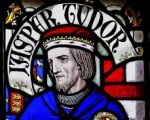
17th December:
1538 – Pope Paul III announced the excommunication of Henry VIII.
1550 – Birth of Henry Cavendish, soldier, traveller and son of Bess of Hardwick and Sir William Cavendish. He was married to Grace Talbot, daughter of George Talbot, 6th Earl of Shrewsbury. This match was arranged by his mother who had married the Earl of Shrewsbury.
1559 – Matthew Parker was consecrated as Elizabeth I’s Archbishop of Canterbury. According to “The Correspondence of Matthew Parker”, Anne Boleyn charged him with the care of Elizabeth when she saw him in April 1536, “not six days before her apprehension”. Historian Eric Ives writes that this was a request that Parker never forgot, and something which stayed with him for ever. Parker obviously came to be important to Elizabeth, because she made him her Archbishop of Canterbury in 1559. It was a post which Parker admitted to Lord Burghley, he would not have accepted if he “had not been so much bound to the mother”. Parker was Archbishop until his death in 1575.

Lady Katherine Grey was born as the second surviving daughter of Henry Grey, 1st Duke of Suffolk, and his wife, Frances Brandon, Duchess of Suffolk. Born at Bradgate Park in Charnwood Forest, Leicestershire, Katherine was the offspring of an aspiring and preeminent Tudor family with ambitions at the royal court. Katherine’s maternal grandparents were Charles Brandon, 1st Duke of Suffolk, and Mary Tudor, the youngest surviving sister of King Henry VIII; this gave Katherine, and her two siblings, Jane and Mary, a claim to the English throne through their grandmother. Known popularly as the younger sister of Lady Jane Grey, the tragic young queen who was sentenced to death by the Catholic Queen Mary I, Katherine has become a fashionable topic of discussion in the academic and popular history world. Historians such as Leanda de Lisle have revaluated her life to reveal an equally as resilient and tragic figure to her sister Jane; indeed, Lady Katherine’s short life witnessed a number of tumultuous and unexpected events. This article intends to put forward a condensed examination of her life, which will include: her marriage, imprisonment, claim to the throne and downfall.
[Read More...]
10th December:
1541 – Thomas Culpeper, Gentleman of the Privy Chamber, and Francis Dereham, a member of Queen Catherine Howard’s household, were executed at Tyburn. Culpeper and Dereham were tried on 1st December 1541 at the Guildhall, and convicted of treason. Both were executed on 10th December 1541, but Culpeper was beheaded while Dereham had to face the brutal traitor’s death of being hanged, drawn and quartered. Culpeper was buried at St Sepulchre-without-Newgate (Holborn).
1591 – Executions of Edmund Gennings, Roman Catholic priest, and Swithin Wells, Roman Catholic, on a scaffold set up outside Wells’ house at Holborn. They were hanged, drawn and quartered for treason due to their Catholic faith and for celebrating the mass.

3rd December:
1536 – A proclamation was made to the rebels of the Pilgrimage of Grace offering them a pardon. The rebellion dispersed, but was followed by another rebellion, Bigod’s Rebellion, in early 1537. Click here to read more.
1577 – Death or burial of William Downham, Bishop of Chester and former
Chaplain of Elizabeth I before her accession. He was buried in the choir of Chester Cathedral.
1600 – Death of Roger North, 2nd Baron North, peer and politician in Elizabeth I’s reign, at his London home in Charterhouse Square. He was given a funeral service at St Paul’s, followed by a burial at Kirtling in Cambridgeshire. North was a friend of Robert Dudley, Earl of Leicester, and served Elizabeth I as Privy Councillor and Treasurer of the Household.
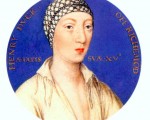
26th November:
1533 – Henry Fitzroy, the Duke of Richmond and Somerset, married Lady Mary Howard at Hampton Court Palace. Fitzroy was the illegitimate son of Henry VIII by his mistress Elizabeth (Bessie Blount) and Mary was the daughter of Thomas Howard, the 3rd Duke of Norfolk, and the cousin of Anne Boleyn.
1542 (26th or 27th November) – Death of Robert Radcliffe, 1st Earl of Sussex, courtier, soldier and Lord Great Chamberlain of England. He was buried at St Laurence Pountney Church in London, but then moved to Boreham in Essex. Radcliffe was made Lord Great Chamberlain of England for life on 3rd May 1540 for his loyal service to Henry VIII.
1546 – Baptism of Sir Giles Fletcher the Elder, diplomat, member of Parliament and author, in Watford, Hertfordshire. Fletcher was the son of Richard Fletcher, Church of England clergyman, and his wife, Joan. Fletcher is known for his poetical work, “Licia” (1593), but his other works included the Latin pastorals Poemata varii argumenti, the poem De literis antiquae Britanniae and the account of his travels as diplomat, “Of the Russe Common Wealth. Or, Maner of gouernement of the Russe emperour, (commonly called the Emperour of Moskouia) with the manners, and fashions of the people of that countrey”. He was the father of the poet Sir Giles Fletcher the Younger.
1585 – Executions of Hugh Taylor, Catholic priest, and his friend Marmaduke Bowes at York. They were both hanged, and were the first men executed under the 1585 statute which made it treason to be a Jesuit or seminary priest in England, or to harbour such a priest. Both men were beatified in 1987.
1612 – Death of Sir Thomas Walmsley, Judge and Justice of the Common Pleas, at his home at Dunkenhalgh in Lancashire. He was buried at Blackburn.
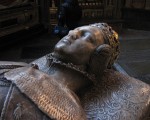
19th November:
1563 – Robert Sidney, 1st Earl of Leicester, courtier, patron of the arts and poet, was born at Penshurst in Kent. Sidney was the second son of Sir Henry Sidney and his wife, Mary (née Dudley), daughter of John Dudley, Duke of Northumberland. It was discovered that Robert was a poet, like his more famous brother Philip, when his notebook came to light in the library of Warwick Castle in the 1960s. The notebook contained a collection of over sixty sonnets, pastorals, songs and shorter pieces written in the 1590s.
1564 – Death of Lord John Grey, youngest son of Thomas Grey, 2nd Marquis of Dorset and courtier. Grey was arrested with his brothers, Thomas and Henry (Duke of Suffolk and father of Lady Jane Grey), in 1554 for their involvement in Wyatt’s Rebellion. Thomas and Henry were executed, and although John was condemned to death, he was released and pardoned due to the intercession of his wife, Mary, sister of Anthony Browne, Viscount Montagu.
1566 – Death of Reynold Corbet, member of Parliament and judge. He was buried at Stoke upon Tern in Shropshire. Corbet’s offices included recorder of Shrewsbury, Justice of the Peace for Shropshire, a member of the Council in the Marches and Puisne Justice of the Queen’s Bench.
1584 – Death of William Bendlowes, member of Parliament, Serjeant-at-Law and Law Reporter. He was buried at Great Bardfield in Essex, where his monumental brass can still be seen today. Bendlowes reported on court cases from the period 1534-1579.
1587 – Death of Henry Vaux, poet, Catholic recusant and priest harbourer, of consumption at Great Ashby, the home of his sister, Eleanor Brooksby. Vaux was sent to Marshalsea prison after being arrested in November 1586 for offering accommodation and assistance to Catholic priests. He was released in May 1587 due to ill health.
1590 – Death of Thomas Godwin, physician and Bishop of Bath and Wells, at Wokingham in Berkshire, his birthplace. He had retired there due to ill health, and was buried in the local church. Elizabeth I chose Godwin as one of her Lent preachers, and he served in that post for eighteen years.
1604 – Death of Richard Edes, Dean of Worcester, royal chaplain and court preacher, at Worcester. He was buried in Worcester Cathedral. Edes was a royal chaplain to Elizabeth I and James I, and had just been appointed to work on a new version of the English Bible when he died.

12th November:
1532 – Henry VIII and Anne Boleyn finally left Calais after being delayed by a Channel fog. They landed at Dover on Thursday 14th November. They had been visiting Calais to meet with the French king, Francis I.
1537 – Jane Seymour’s body was taken by chariot from Hampton Court Palace to Windsor Castle.
1554 – The opening of Mary I’s third Parliament. At this Parliament, a bill was passed allowing the exiled Cardinal Reginald Pole to return to England as papal legate.
1555 – Mary I’s Parliament re-established Catholicism in England.
1555 – Stephen Gardiner, Bishop of Winchester and Mary I’s Lord Chancellor, died. Gardiner crowned Mary I Queen of England at her coronation at Westminster Abbey on the 1st October 1553, and helped Mary to restore Catholicism and overturn the annulment of her parents’ marriage, making her legitimate. He was also instrumental in the marriage negotiations between Mary and Philip II of Spain, and married the couple at Winchester Cathedral on the 25th July 1554. He was laid to rest at Winchester Cathedral in what is now known as the Bishop Gardiner Chantry Chapel.
1576 – Death of Sir Edward Saunders, judge. He was buried at Weston under Wetherley, Warwickshire. Saunders’ offices included Serjeant-at-Law, Recorder of Coventry, Chief Justice of the King’s Bench and Chief Baron of the Exchequer.
1586 – A delegation of forty MPs and twenty peers presented Elizabeth I with a petition demanding that “a just sentence might be followed by as just an execution” in the case of Mary, Queen of Scots.
1595 – Death of Sir John Hawkins, merchant, shipbuilder, navigator, explorer, slave trader and naval commander, at Puerto Rico on a voyage, with Sir Francis Drake, which aimed to capture Panama. He was buried at sea. Hawkins is known for being the chief architect of Elizabeth I’s navy, and he was knighted for gallantry after serving as Vice-Admiral during the Spanish Armada.

1514 – Mary Tudor, sister of Henry VIII, was crowned Queen of France. She had married King Louis XII at Abbeville on the 9th October 1514. The marriage was rather short-lived, as Louis died on the 1st January 1515, and Mary went on to marry Charles Brandon, Duke of Suffolk.
1520 – Death of Sir Robert Poyntz, courtier, landowner and Vice-Chamberlain and Chancellor of the Household to Queen Catherine of Aragon. He was around seventy when he died.
1530 – Death of Sir John More, lawyer, judge and father of Sir Thomas More. More served as Serjeant-at-Law, Justice of Assize, Justice of the Common Pleas, and also served on the King’s Bench from 1520 until his death.
1605 – Guy Fawkes was caught with thirty-six barrels of gunpowder in the cellars beneath Westminster. The idea was to blow up the House of Lords at the opening of Parliament on the 5th November, and to assassinate King James I.

29th October:
1532 – Henry VIII accompanied Francis I to the border between English Calais and France to bid farewell to him.
1586 – Four days after a commission had found Mary, Queen of Scots guilty of conspiring to assassinate Elizabeth I, Parliament met to discuss Mary’s fate. They decided that they should petition the Queen for Mary’s execution.
1605 – Death of George Clifford, 3rd Earl of Cumberland, courtier and naval commander, at the duchy house, near the Savoy in London. He was buried in the family vault in Holy Trinity Church, Skipton, near Skipton Castle. Clifford was Elizabeth I’s second champion. He commanded a ship in the Anglo-Spanish War, and is known for capturing Fort San Felipe del Morro in San Juan, Puerto Rico, in 1598. Elizabeth I nicknamed him her “rogue”.
1618 – Sir Walter Ralegh (Raleigh), courtier, explorer, author and soldier, was executed at Westminster. Ralegh had originally been found guilty of treason and sentenced to death in 1603, after being implicated in the Main Plot against James I, but the King spared his life. In 1618, the death sentence was reinstated after he incurred the wrath of Spain for storming San Thomé and killing the Spanish governor.

I thought it would be fun to have “Throwback Thursday” here on the Tudor Society to highlight interesting articles, videos, expert talks, magazines etc. from our archives. As today is the anniversary of the death of Margaret Tudor, Queen of Scots (from 1503-1513) and sister of Henry VIII, I thought I’d share some Margaret Tudor themed goodies from our archives.
[Read More...]
8th October:
1515 – Birth of Lady Margaret Douglas, Countess of Lennox. Margaret was the daughter of Margaret Tudor, Queen Dowager of Scotland and sister of Henry VIII, and Archibald Douglas, 6th Earl of Angus.
1536 – The commons, i.e. the people, approved the petition of grievances drawn up by the rebels of Horncastle, Lincolnshire.
1549 – Edward Seymour, Duke of Somerset and Lord Protector, was proclaimed a traitor by the King’s Privy Council.
1561 – Baptism of Edward Wright, mathematician and cartographer, at Garveston in Norfolk. Wright is known for his treatise “Certaine Errors in Navigation” (1599), his work on Mercator’s map projection and his translation of John Napier’s 1614 Mirifici logarithmorum canonis descriptio into English.
1594 – Death of Ellis Price (Prys), scholar and administrator. Price served Henry VIII as a Monastic Visitor in Wales 1535, Commissary-General and Chancellor of the diocese of St Asaph, and as an administrator in Wales after the “Acts of Union”. He also later served as Sheriff of Merioneth, Anglesey, Caernarfon, and Denbigh, and a member of the council in the Marches of Wales.

On this day in history, 29th September 1564, Robert Dudley was made Earl of Leicester, an earldom which had been planned earlier in the year to make him more acceptable as a bridegroom to Mary, Queen of Scots. This earldom was an important one, having previously been held by royal princes like John of Gaunt and Henry of Bolingbroke (Henry IV). Although Dudley behaved impeccably at the ceremony, the queen did not. As she put the chain of earldom around Dudley’s neck, she “could not refrain from putting her hand in his neck to kittle him smilingly.” A loving gesture and perhaps one that was meant to reassure Dudley that he was still hers.
[Read More...]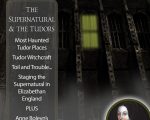
In this month’s Tudor Life magazine is perfect for the month of October as it’s all about the Supernatural and the Tudors. Packed with fascinating articles about the spookier side of history.
[Read More...]
24th September:
1486 – Arthur, Prince of Wales and son of Henry VII, was christened at a lavish ceremony at Winchester Cathedral.
1516 – Birth of Richard Pate, lawyer, member of Parliament and refounder of Cheltenham Grammar School, now known as Pate’s Grammar School.
1526 – Sometime before 24th September 1526, Marmaduke Huby, Abbot of Fountains since 1495, died at around the age of 87. It is thought that he was buried under the floor of the chapter house.
1561 – Birth of Edward Seymour, Viscount Beauchamp, son of Katherine Grey (sister of Lady Jane Grey) and Edward Seymour, 1st Earl of Hertford, in the Tower of London. He was born in the Tower because his parents had been imprisoned for marrying without the Queen’s permission.
1589 – Executions of William Spenser, Roman Catholic priest and martyr, and layman Robert Hardesty at York. Spenser was executed for being a priest, and Hardesty for sheltering Spenser.

After another delicious breakfast at the Arden Hotel in Stratford-upon-Avon – French toast and I shared it with Francis I and Elizabeth I, as you can see! – we said our goodbyes to Stratford and set off for London. We arrived in London for lunch and then headed to London Charterhouse.
London Charterhouse has such a fascinating history. The land was used as a burial site for victims of the Black Death in 1348 and then in 1371, the Carthusian monastery was built. You might remember me telling you about that Carthusian Martyrs of Henry VIII’s reign, monks from this very monastery who refused to sign the oath recognising Henry VIII as supreme head of the Church in England and who were brutally executed or starved to death. The monastery was dissolved in the 1530s and it then passed through the hands of Sir Edward North; John Dudley, Duke of Northumberland; North again; Thomas Howard, 4th Duke of Norfolk; Philip Howard, 13th Earl of Arundel; Elizabeth I; Thomas Howard, Earl of Suffolk, and Thomas Sutton. Elizabeth I visited it on several occasions.
[Read More...]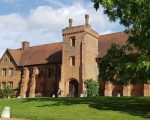
After breakfast, we said goodbye to the Harte and Garter Hotel and travelled on to Hatfield House in Hertfordshire.
Although the main palace is Jacobean, having been built in 1611, in the reign of James I, it houses many treasures from the time when there was a 15th century palace on the site, the home that Elizabeth knew in her childhood and youth. The only part of that former palace that still survives today is the part of the houses that houses the Banqueting Hall with its wonderful original timber roof.
[Read More...]
17th September:
1558 – Death of Walter Devereux, 1st Viscount Hereford, at the Devereux seat at Chartley in Staffordshire. He was buried in Stowe church. Devereux served Henry VIII as joint Constable of Warwick Castle, as a member of the jury at the trial of Edward Stafford, Duke of Buckingham, in 1521, in the government of the Welsh Marches, as Steward in Princess Mary’s household at Ludlow and Chamberlain of the Court of General Surveyors. He also served Edward VI as a Privy Councillor.
1563 – Death of Henry Manners, 2nd Earl of Rutland, courtier and soldier, during an outbreak of the plague. He was buried at Bottesford parish church in Leicestershire. Manners served Edward VI as Warden of the East and Middle Marches on the Scottish borders, joint Lord Lieutenant of Lincolnshire and Nottinghamshire, and Lord Lieutenant of Nottinghamshire. He was imprisoned when Mary I came to the throne for his support of John Dudley, Duke of Northumberland, but was released into house arrest and then pardoned. He served Mary I as Captain-General of Horsemen and Lieutenant and Captain-General in Calais. During Elizabeth I’s reign, he served as Lord Lieutenant of Nottinghamshire and Rutland, and President of the Council of the North.
1575 – Death of Heinrich (Henry) Bullinger, the Swiss reformer and theologian, in Zurich. Bullinger succeeded Huldrych Zwingli as pastor at Grossmünster and head of the church in Zurich. His main work was “The Decades”, a theological work, but his sermons were also translated and published, and he wrote historical works.
1577 – The Edict of Poitiers ratified the Treaty of Bergerac, which had been signed between Henry III of France and the Huguenot princes.
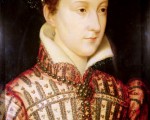
10th September:
1515 – Thomas Wolsey was made Cardinal.
1533 – Princess Elizabeth, daughter of Henry VIII and Anne Boleyn, was christened at the Church of Observant Friars in Greenwich.
1543 – Death of Sir Edward Chamberlayne, Oxfordshire gentleman and soldier. He was buried at Woodstock.
1547 – The Battle of Pinkie Cleugh, part of the War of the Rough Wooing between England and Scotland. Click here to read more.
1549 – Death of Sir Anthony Denny, Henry VIII’s great friend and groom of the stool, at Cheshunt. He was buried in St Mary’s Church, Cheshunt.
1557 – Execution of Joyce Lewis (née Curson and other married name Appleby, Lady Appleby), Protestant martyr, at Lichfield. She was burned at the stake for her Protestant beliefs.
1569 – Death of Gilbert Bourne, Bishop of Bath and Wells, at Silverton in Devon. Bourne was deprived of his see in Elizabeth I’s reign after refusing to take the “Oath of Supremacy”. He was buried in Silverton Church.
1604 – Death of William Morgan, Bishop of St Asaph and Bible translator, at the Bishop’s Palace at St Asaph. He was buried there in the cathedral church.
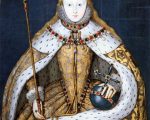
There are so many articles, videos, talks etc. on Elizabeth I on the Tudor Society site so I thought I’d make a list of some of them, you can find others by using the search box.
[Read More...]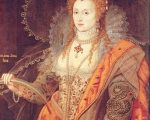
3rd September:
1553 – Edward Courtenay was created Earl of Devon. He had been imprisoned in 1538, at the age of twelve, due to his family’s links with the Poles and Nevilles, but was released shortly after the accession of Mary I.
1557 – News reached London that the English and Imperial troops had been successful in storming St Quentin, and there were widespread celebrations; bonfires were lit, bells were rung and there was singing. The good news was marred, however, by news of the death of Henry Dudley.
1588 (3rd or 5th September) – Death of Richard Tarlton, actor and famous clown, in Shoreditch. He was buried in St Leonard’s Church, Shoreditch. Tarlton was a member of the Queen’s Men, but is famed for his post-play jigs as a clown.
1592 – Death of writer and playwright Robert Greene in Dowgate. He died from a fever and was buried in a churchyard near Bedlam. Greene was a prolific writer, writing autobiographical works, plays and romances, but is best known for his pamphlet “Greene’s Groats-worth of Wit bought with a Million of Repentance”, which is the first contemporary reference to William Shakespeare. It was actually an attack on Shakespeare, whom Greene accused of plagiarism, and of being uneducated.
1597 – Death of Sir John Norreys (Norris), military commander, at his brother Thomas’s home, Norris Castle in Mallow, co. Cork. He died in his brother’s arms, and it is thought that his death was due to trouble from old wounds, perhaps gangrene. Norris served as a soldier in France, the Low Countries and Ireland.

27th August:
1549 – The Battle of Dussindale took place, ending Kett’s Rebellion in Norfolk.
1557 – The storming of St Quentin by English and Imperial forces. Admiral de Coligny and his French troops, numbering only a thousand, were overcome by around 60,000 soldiers, and St Quentin fell. Henry Dudley, the youngest son of the late John Dudley, Duke of Northumberland, was killed by a cannonball during the storming.
1590 – Death of Pope Sixtus V at Rome.
1610 – Funeral of Lady Anne Bacon (née Cooke), mother of Sir Francis Bacon, at St Michael’s Church, near St Albans. Anne was the daughter of Sir Anthony Cooke, and was known for her translation of John Jewel’s “Apologie of the Church of England”.

20th August:
1509 – Birth of Sir William Stanford (Staunford), judge and legal writer. Stanford served Mary I as one of her queen’s Sergeants, and is known for his legal books, “Les plees del coron” (1557), on criminal law, and “Exposicion of the Kinges Prerogative” (1567)
1580 – Death of Sir George Bowes, soldier and administrator, at Streatlam, county Durham. He was buried in the family vault at Barnard Castle Church. Bowes served Elizabeth I as a member of the Council of the North and the Ecclesiastical High Commission for York, a Justice of the Peace and Sheriff, and as the Earl of Sussex’s Deputy in co. Durham and Richmondshire, and Provost Marshal. Bowes was also chosen to escort Mary, Queen of Scots from Carlisle to Bolton Castle in 1568.
1588 – A thanksgiving service was held at St Paul’s in London to give thanks to God for England’s victory over the Spaniards.
1589 – Marriage of James VI of Scotland and Anne of Denmark, second daughter of King Frederick II of Denmark, by proxy at Kronborg Castle, Helsingør, Denmark. James was represented by his ambassador at the Danish court, George Keith, 5th Earl Marischal.
1599 – Death of Sir Thomas Norris, soldier and Lord President of Munster, at his house at Mallow, County Cork, Ireland. Norris died from an injury to his jaw sustained in a skirmish with Thomas Burke and his troops in May 1599.
1610 – Death of courtier Edmund Tilney, censor of plays and Master of the Revels. He was buried in St. Leonard’s Church, Streatham, London.
1648 (or 5th August) – Death of Edward Herbert, 1st Baron Herbert of Cherbury and 1st Baron Herbert of Castle Island, diplomat, philosopher and the author of “The Life and Raigne of King Henry the Eighth”. He was buried at St Giles-in-the-Fields, London.
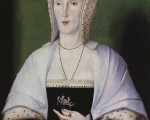
13 August:
1514 – Princess Mary Tudor, sister of Henry VIII, married King Louis XII by proxy at Greenwich Palace. Mary was present at the ceremony, but the Duke of Longueville stood in for the groom.
1566 – Death of Sir Humphrey Radcliffe, member of Parliament, at his manor of Elstow. He was buried in Elstow Church. Radcliffe served as a member of Parliament during the reigns of Mary I and Elizabeth I, and then as a JP and Sheriff in Elizabeth I’s reign.
1568 – Death of William Barlow, Bishop of Chichester. He was buried in Chichester Cathedral.
1579 – Executions of Roman Catholic martyrs Friar Conn O’Rourke and Patrick O’Healy, Bishop of Mayo. They were hanged just outside Kilmallock, co. Limerick. O’Healy was tortured before his death, by having spikes driven through his hands, in the hope that he would give Sir William Drury, Lord President of Munster, details on James fitz Maurice Fitzgerald’s plans to lead a Catholic crusade to Ireland. He would not talk. O’Healy was beatified in 1992.
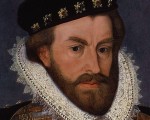
Christopher Hatton was born around 1540 during the reign of Henry VIII. He had a particularly interesting life, originating from a gentry family with few connections to the royal family. He was the second son of William Hatton and his wife, Alice, daughter of Lawrence Saunders. Very little is known of his early life, excepting that his early education is said to have been supervised by his maternal uncle, William Saunders. Regarding his later education, it is recorded that on 26th May 1560 he was enrolled in the Inner Temple. However, this part of Hatton’s life is equally as elusive; arguments suggesting that he may have been a barrister. Hatton’s fame and position came through the unusual concept, by sixteenth-century standards, of ‘social mobility’; essentially rising from one’s social class through personal merit and skill rather than relying on nepotism or family wealth. Hatton did this through monopolising on a relationship with Queen Elizabeth I, which shall be the primary focus of this article.
[Read More...]
6 August:
1504 – Birth of Matthew Parker, Archbishop of Canterbury, in the parish of St Saviour, Norwich. Parker was the son of worsted weaver William Parker and his wife Alice Monings [Monins] from Kent.
1514 – Marriage of Margaret Tudor, sister of Henry VIII and widow of James IV of Scotland, and Archibald Douglas, 6th Earl of Angus, at Kinnoull in Perthshire.
1549 – Battle of Clyst Heath during the Prayer Book Rebellion.
1623 – Death of Anne Hathaway, wife of William Shakespeare. Anne was buried next to her husband in the Church of the Holy Trinity, Stratford-upon-Avon.